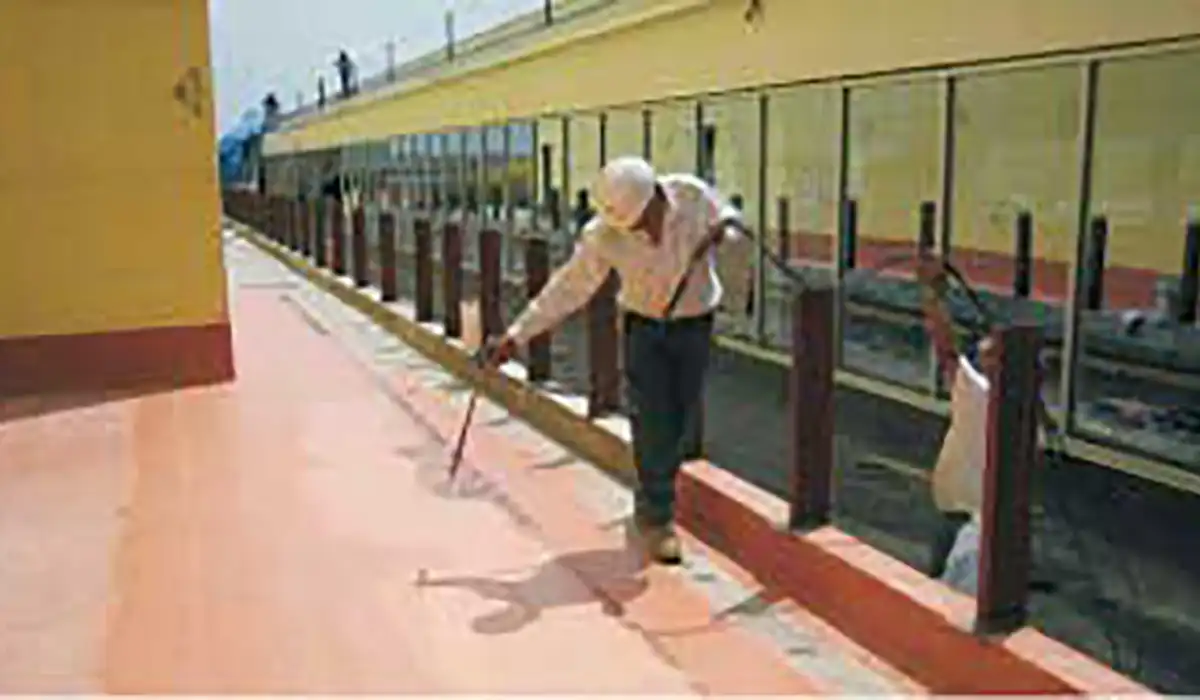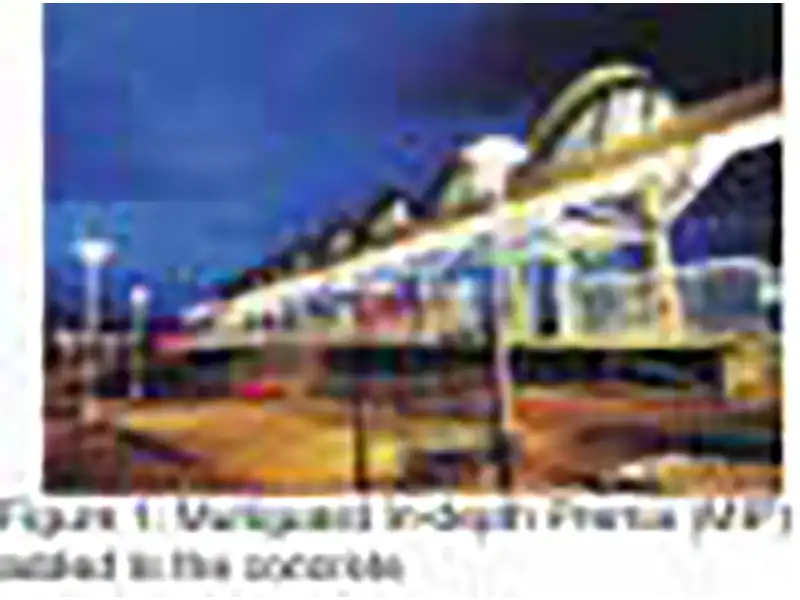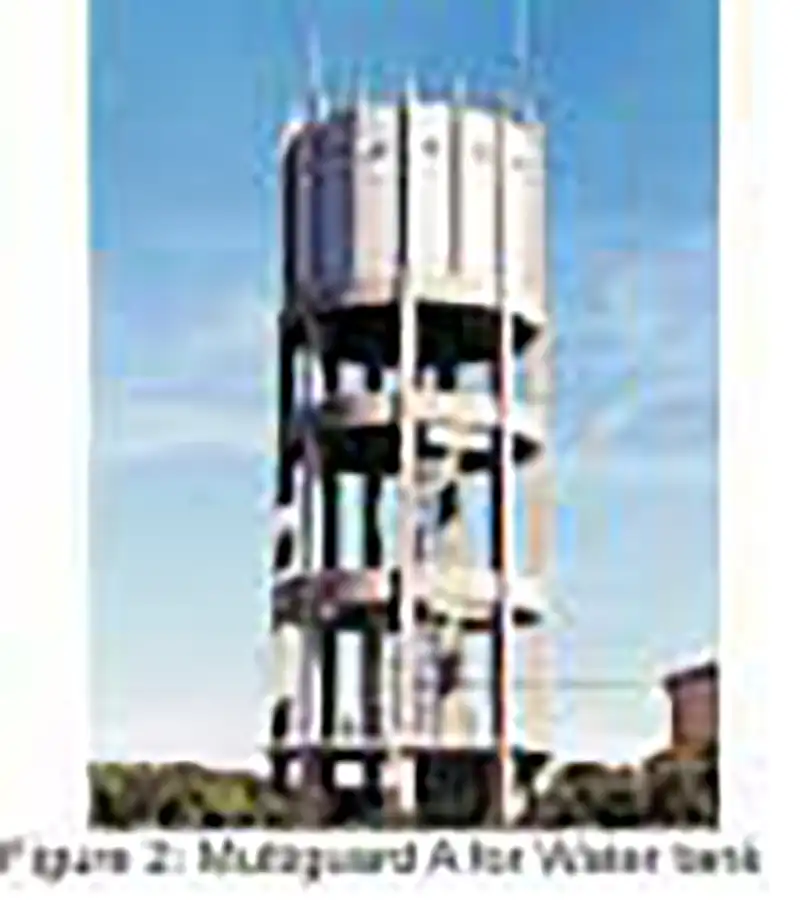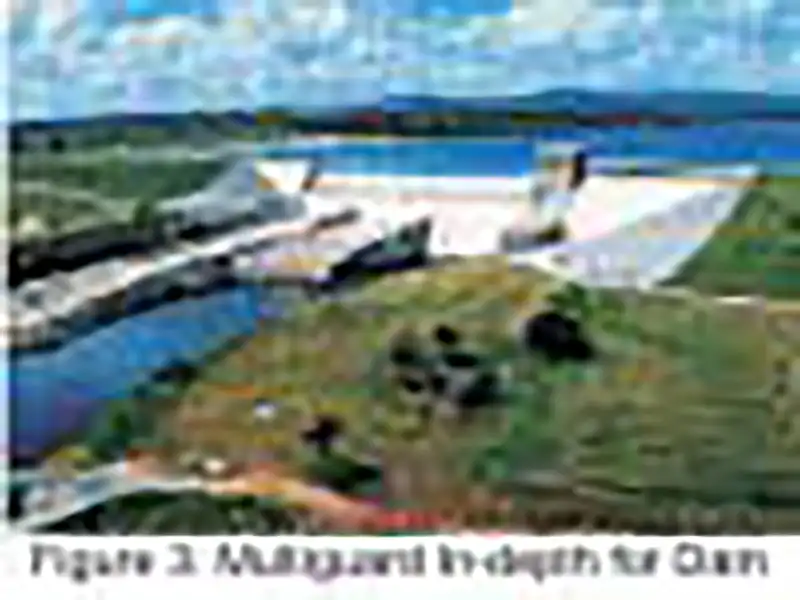Selection of Suitable Types of Waterproofing Systems
Pramod Pathak, Director, Multichem Group, Mumbai.
 Concrete is the most widely used building material which is versatile,and has desirable engineering properties, it can be molded intomany shapes, and more importantly, it is produced with cost-effective materials. In recent years, the use of concrete has increased phenomenally, specially in infrastructure and highrise buildings worldwide.
Concrete is the most widely used building material which is versatile,and has desirable engineering properties, it can be molded intomany shapes, and more importantly, it is produced with cost-effective materials. In recent years, the use of concrete has increased phenomenally, specially in infrastructure and highrise buildings worldwide.
These days, concrete is beingused for wide varieties of applications to make it suitable for different conditions. In these conditions, normal concrete may fail to exhibit the required quality performance and durability. In practice one of the most important requirements of concrete is that it must be impervious to water under two conditions: firstly, when subjected to pressure water on one side, secondly to the absorption of surface water by capillary action.
Concrete possesses a pore structure which distinguishes concrete from metals and makes it airtight and watertight. The capillary pore structure of concrete allows the permeation of gas or liquid, especially under pressure. The macrostructure of concrete reveals that it consists of
(a) coarse and fine aggregates
(b) hydrated cement paste, and
(c) entrapped air voids.
 The macrostructure also reveals visible cracks in the hydrated cement paste and aggregates, mainly due to the volume change caused by shrinkage, settlement, and expansion/ contraction of temperature. The permeability of concrete depends on these pore structures. Even the best of the concrete is not gastight or watertight unless the pores are closed.
The macrostructure also reveals visible cracks in the hydrated cement paste and aggregates, mainly due to the volume change caused by shrinkage, settlement, and expansion/ contraction of temperature. The permeability of concrete depends on these pore structures. Even the best of the concrete is not gastight or watertight unless the pores are closed.
The low durability that we witness in many concrete structures, which gets manifested in the form of cracking, and spalling due to poor quality of materials or workmanship and corrosion of steel, is principally due to inferior design, specification or construction.
Certain parts of a concrete structure may also be subjected to physical wear and tear. Parking garages, concrete roads, and breakwater wall are examples of structures subjected to repeated wear.
The factors governing the permeability of concrete can be summarized as follows:
The problem is neatly summed up in a quote by John Ruskin (1819–1900): “There is hardly anything in the world that some man can’t make just a little worse and sell just a little cheaper, and the people who buy on price alone are this man’s lawful prey” Multichem manufactures wide range of waterproofing systems which are classified into (a) Membrane Waterproofing (b) Waterproofing by crystallization. Under membrane waterproofing, an external layer is formed by way of application and water is not allowed to enter the structure. Multiguard A (Figure 2) is a two component, thixotropic, cementitious modified polymer coating with high adhesion to both steel and concrete, which falls into this category. It has high level of impermeability of more than 6.00 X 10–16 m/sec. Multiguard A forms a hard, highly alkaline coating with a degree of elasticity which not only protects the concrete, or other substrates, from the effects of aggressive acidic gases, moisture and chlorides, but also has greatly enhanced chemical resistance.
There include: Rigid waterproofing of water tanks, sealing internal basement and cellar walls against dampness, protection of concrete structures in marine environment, external tanking of substructure concrete such as foundations and basement walls in new buildings.
Under Waterproofing by Crystallization, structure is waterproofed in-depth. The active ingredients create catalytic reaction generating billions of crystals to block cracks and capillaries in the concrete. Multichem manufactures (a) Multiguard In-depth TA/TB for surface application (b) Multiguard In-depth Premix, additive to be added to the concrete. Multiguard In-Depth (Figure 3) contains active waterproofing chemicals which create catalytic reaction when in contact with moisture, and cementitious products in the concrete, generating insoluble crystalline complexes which seal the capillaries tracks, pores and minor shrinkage cracks. They penetrate even against strong hydrostatic pressure, becoming an integral part of the concrete. As the reaction is catalytic in nature the waterproofing chemicals remain active for the life of the structure, permanently sealing it from water and waterborne chemicals penetration. The crystals continue to grow as long as moisture is present, often reaching several feet in length. Once moisture is removed, the chemicals remain dormant in the concrete, ready to be reactivated by water even years later if new non-structural cracks (which are <0.4mm) develop through natural settling or other factors.
 Multiguard In-Depth Premix (MIP) (Figure 1) is designed to enhance by effectively waterproofing the concrete and reducing the shrinkage cracks. This provides a cost effective solution to membrane systems while increasing concrete’s durability. Multiguard In-Depth Premix is added to fresh concrete easily at the batch plant or directly into ready mix trucks. It works to continuously prevent moisture from penetrating through the Concrete by creating a chemical reaction within the pores and capillaries to enhance the hydration process of the cement component within the concrete. As an additive for concrete, the Multiguard In-Depth Premix (MIP) will promote additional CSH crystals to grow within the concrete utilizing the concretes own natural hydration process to reduce the permeability of the concrete. The increased hydration process also allows for an increased ability for the concrete to self-heal micro cracking upon the presence of moisture. Multiguard In-depth systems are recommended for the following:
Multiguard In-Depth Premix (MIP) (Figure 1) is designed to enhance by effectively waterproofing the concrete and reducing the shrinkage cracks. This provides a cost effective solution to membrane systems while increasing concrete’s durability. Multiguard In-Depth Premix is added to fresh concrete easily at the batch plant or directly into ready mix trucks. It works to continuously prevent moisture from penetrating through the Concrete by creating a chemical reaction within the pores and capillaries to enhance the hydration process of the cement component within the concrete. As an additive for concrete, the Multiguard In-Depth Premix (MIP) will promote additional CSH crystals to grow within the concrete utilizing the concretes own natural hydration process to reduce the permeability of the concrete. The increased hydration process also allows for an increased ability for the concrete to self-heal micro cracking upon the presence of moisture. Multiguard In-depth systems are recommended for the following:
 It is important to choose right products and system to achieve a durable and impermeable concrete structure which can last more than its anticipated life. It is important to consider that all products are not the same although most of the datasheets look alike. In a market where the offer often creates confusion about the real quality of the products, it is important to remember that waterproofing accounts for less than 1% of the total budget foreseen for the building, but 75% of possible damages to the same building could be caused by incorrect waterproofing products and their short term durability.
It is important to choose right products and system to achieve a durable and impermeable concrete structure which can last more than its anticipated life. It is important to consider that all products are not the same although most of the datasheets look alike. In a market where the offer often creates confusion about the real quality of the products, it is important to remember that waterproofing accounts for less than 1% of the total budget foreseen for the building, but 75% of possible damages to the same building could be caused by incorrect waterproofing products and their short term durability.
Durability and Impermeability

These days, concrete is beingused for wide varieties of applications to make it suitable for different conditions. In these conditions, normal concrete may fail to exhibit the required quality performance and durability. In practice one of the most important requirements of concrete is that it must be impervious to water under two conditions: firstly, when subjected to pressure water on one side, secondly to the absorption of surface water by capillary action.
Concrete possesses a pore structure which distinguishes concrete from metals and makes it airtight and watertight. The capillary pore structure of concrete allows the permeation of gas or liquid, especially under pressure. The macrostructure of concrete reveals that it consists of
(a) coarse and fine aggregates
(b) hydrated cement paste, and
(c) entrapped air voids.

The low durability that we witness in many concrete structures, which gets manifested in the form of cracking, and spalling due to poor quality of materials or workmanship and corrosion of steel, is principally due to inferior design, specification or construction.
Certain parts of a concrete structure may also be subjected to physical wear and tear. Parking garages, concrete roads, and breakwater wall are examples of structures subjected to repeated wear.
The factors governing the permeability of concrete can be summarized as follows:
- The quality of materials, e.g., Cement, sand and aggregates
- The quality of pore structure, based on w/c ratio, the admixtures used and the degree of hydration
- The quality of interfacial transition zone
- The degree of compaction
- The cracking arising because of structural loading
- The adequacy of curing It is also true that all concretes produced for different application may not be designed to be completely impermeable.
Products Selection and System
Hence it is very important that the selection of any construction product must be done with care and this is especially the case with waterproofing of concrete structures. Failure here has been the subject of numerous claims and litigation, something that no professional person wants to be the subject of.The problem is neatly summed up in a quote by John Ruskin (1819–1900): “There is hardly anything in the world that some man can’t make just a little worse and sell just a little cheaper, and the people who buy on price alone are this man’s lawful prey” Multichem manufactures wide range of waterproofing systems which are classified into (a) Membrane Waterproofing (b) Waterproofing by crystallization. Under membrane waterproofing, an external layer is formed by way of application and water is not allowed to enter the structure. Multiguard A (Figure 2) is a two component, thixotropic, cementitious modified polymer coating with high adhesion to both steel and concrete, which falls into this category. It has high level of impermeability of more than 6.00 X 10–16 m/sec. Multiguard A forms a hard, highly alkaline coating with a degree of elasticity which not only protects the concrete, or other substrates, from the effects of aggressive acidic gases, moisture and chlorides, but also has greatly enhanced chemical resistance.
There include: Rigid waterproofing of water tanks, sealing internal basement and cellar walls against dampness, protection of concrete structures in marine environment, external tanking of substructure concrete such as foundations and basement walls in new buildings.
Under Waterproofing by Crystallization, structure is waterproofed in-depth. The active ingredients create catalytic reaction generating billions of crystals to block cracks and capillaries in the concrete. Multichem manufactures (a) Multiguard In-depth TA/TB for surface application (b) Multiguard In-depth Premix, additive to be added to the concrete. Multiguard In-Depth (Figure 3) contains active waterproofing chemicals which create catalytic reaction when in contact with moisture, and cementitious products in the concrete, generating insoluble crystalline complexes which seal the capillaries tracks, pores and minor shrinkage cracks. They penetrate even against strong hydrostatic pressure, becoming an integral part of the concrete. As the reaction is catalytic in nature the waterproofing chemicals remain active for the life of the structure, permanently sealing it from water and waterborne chemicals penetration. The crystals continue to grow as long as moisture is present, often reaching several feet in length. Once moisture is removed, the chemicals remain dormant in the concrete, ready to be reactivated by water even years later if new non-structural cracks (which are <0.4mm) develop through natural settling or other factors.

- Swimming pools
- Tunnels and subway systems
- Parking garages
- All below grade concrete foundations
- Rooftops
- Dry vaults
- Water towers and water reservoirs
- Marine structures
- Pipes
- Bridge decks
- Concrete walls and floor
- Sewage and water treatment plants
Conclusion

NBM&CW April 2008



















